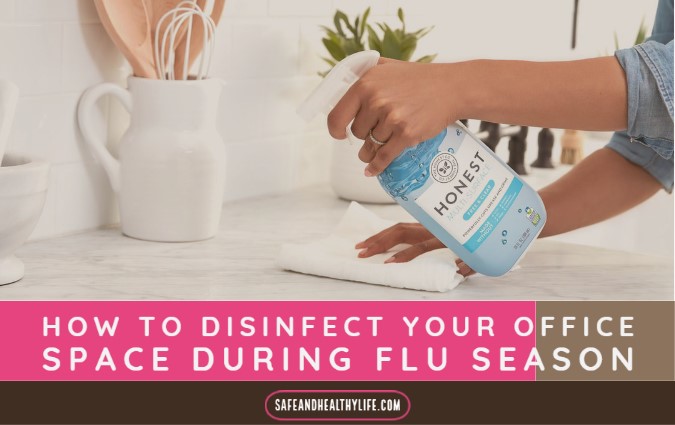
No one likes the flu season – the coughing, aches and pains, and other symptoms that last for a couple of weeks. There are times when you cannot avoid getting the flu, especially if you work in an office.
When you get the flu, it is your responsibility to your coworkers, friends, and family to take care of your germs and ensure you have a clean office space.
The first line of defense at your disposal is cleaning regularly. The sad thing is many people don’t know about the preventive measures they need to take to protect themselves and others.
Cleaning your own offices can wear heavy on you and your staff, especially when you’re already overloaded with the normal workload. It might be time to think about hiring a professional cleaning company to handle this additional work.
It’s important to take your time when interviewing various companies and signing a contract. You may want to learn more about choosing the best commercial cleaning company that’s right for you.
If you are willing to take on the extra workload and tackle this yourself, then here are some things to do to keep your space disinfected and lower the risk of illness:
Common areas to disinfect

1. Tape dispensers and staplers.
Take sanitizer wipes then use them in cleaning the surfaces of the tape dispensers and staplers, bottom, top, and sides. People tend to pick up these items, and this is why you should clean more than just the top.
2. Keyboards.
This is one of the dirtiest pieces of equipment, especially if there are drinks and snacks close by.
They catch crumbs, and during the flu season, they can catch sneezes. If the keyboard has painted letters, then it is not a good idea to use sanitizer wipes because it can end up fading the paint.
Use canned air to remove crumbs. To clean dirty areas, take a paper towel with water then add a small dab of soap. Use sanitizer aerosol to mist the keyboard, then leave it to dry.
3. Computer mouse.
This a device that is used alongside the keyboard, and needs to be regularly cleaned, especially if you have the flu.
It is common for your coworkers or even your boss to grab the mouse without asking you, and this is where contamination can easily take place. Take a sanitizer cloth and wipe it down.
4. Headsets and Phones.
When speaking, saliva usually splatters without you even realizing it, and it can land on the mouthpiece of the headset. When you scrub the headset, see if you can remove either end to clean it even more thoroughly.
If your headset cannot be removed, then it is a good idea to have them replaced every six months or a maximum of one year. Compressed air and sanitizer wipes can easily do the job.
Follow the same precautions you used on the keyboard when cleaning your phone because the lettering is usually painted.
Take a washcloth that is slightly damp with a small dab of hand soap then wipe any area that has grime.
Take an aerosol then spray it. To prevent the buttons from sticking, use compressed air on the buttons.
5. Pencils and Pens.
Use sanitizer wipes to wipe them down individually because they are commonly used by more than one person.
6. Chairs.
Many chairs found in the office usually have arms that people touch when sitting, standing, or just drumming when idle. A co-worker can borrow your chair to sit down when using your computer or when they want to chat with another person.
Let’s say you wipe your mouth, nose, sneezer, or eat, then touch the chair when standing or sitting down, or even pushing the chair out or in from your desk.
This contact makes the chair one of the dirtiest places that need to be cleaned at least once a week. A simple wipe using antibacterial wipes will work.
7. Doors and Windows.
Don’t forget to disinfect the doors and windows too. Doorknobs and window handles contain germs and bacteria, considering that they’re among the many places you need to put your hands on.
Dirt and dust can easily collect on windows, so make sure that you have those covered, as well. Use effective window-cleaning tools to remove stubborn grime and stains thoroughly. Use the antibacterial liquid to get rid of the dirt you cannot see.
8. Refreshment spaces.
The shared spaces like the snack and refreshment areas are notorious when it comes to contamination risks. This can be a room or a drawer where beverages and snacks are kept.
Use sanitizer wipes to wipe the spaces, and this will include water jugs, coffee pots, canisters, nozzles, and door pulls. Avoid the use of aerosols when cleaning these areas because they can easily contaminate beverages and food containers.
9. Fidget toys.
This trend has become popular in the office. It is common for businesses to give them out as rewards and gifts, or some people bring them on their own. They have been designed to help in fighting stress, and they can be irresistible for many people.
It is important to clean them because they go through a couple of hands. The specific item will determine how it should be washed. You can use sanitizer wipes to wash it down or use a gentle cleanser such as soap and water.
Six items for disinfecting

Now that you know the different cleaning methods to use when cleaning your office, we move to items you should always have on you.
- Hand Sanitizer. This is something you are going to use if you want to prevent the skin from over-drying
- Facial Tissue Pocket Packs. You can use this anywhere. Have it in your briefcase or purse.
- Compostable Cleaning Wipes. Have this on the desk so you can use it during a thorough cleaning
- Advanced Hand Sanitizer Singles. This can be slipped into the pocket and can be used anywhere
- Compact Air Purifier. This is a small device that will help in dealing with germs and allergens in your workplace. 80% of dust molecules found in the office are usually skin cells and human hair.
- Cleaning Wipes. These are good when traveling and when in the office.
About The Author:
Stacey Smith is a freelance health writer. She is passionate about writing about women’s health, dental health, diabetes, endocrinology, and nutrition and provides in-depth features on the latest in health news for medical clinics and health magazines.




